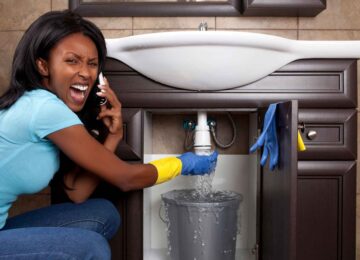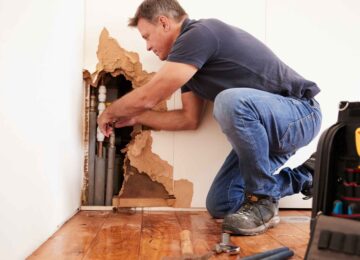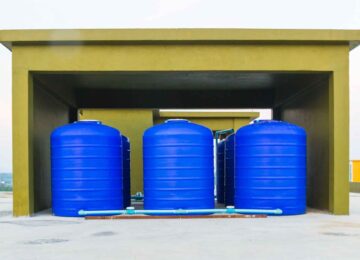Waking up to no hot water in house can feel like a major disruption. Whether it’s a freezing morning shower or a sink full of greasy dishes, the hot water faucet plays an essential role in your daily comfort and hygiene. This issue is more common than many homeowners realize, and the causes range from minor electrical glitches to serious gas supply problems.
Fortunately, many of these problems are either preventable with regular maintenance or easy to diagnose with a few simple steps. In this guide, we’ll walk you through common causes of hot water failure and provide actionable tips on what you can do, plus when to call in a licensed plumber to avoid more serious plumbing issues, which is often the best solution.
Introduction to Hot Water Issues
No hot water in your home is often linked to problems with your water heater, particularly if the unit hasn’t been serviced in a while. Both gas and electric water heaters are prone to issues over time, especially when sediment builds up, heating elements fail, or thermostats malfunction. These malfunctions can lead to inconsistent water temperature, low water pressure, or no hot water at all.
Homeowners frequently face issues like pilot light outages, gas valve failure, or a tripped circuit breaker. Thermostat settings that aren’t adjusted correctly or wear and tear on key components, such as the anode rod or heating elements, can also cause your water heater to stop producing hot water. While some fixes are as simple as pressing a reset button or flushing the tank, others may require professional tools or expertise.
Identifying the cause is the first step toward resolution. But keep in mind, if the issue involves the gas supply, galvanized piping electrical safety, or water heater replacement, it’s safest to contact a plumbing expert. Don’t ignore signs like leaking pipes, strange noises, or rust-colored water, as these could signal bigger underlying problems.
Gas Water Heater Problems
An energy-efficient water heater is a popular choice for many households because it tends to heat water faster and more efficiently than electric models. However, they come with their own set of potential issues that can lead to a complete loss of hot water. If your home relies on a gas water heater, understanding how it functions can help you spot problems early and stay safe.
A gas water heater works by igniting a burner under the tank using a pilot light or glow plug. The flame heats the water, and a thermostat regulates the temperature. If any part of this chain fails, you’ll be left with cold water. A gas leak, which is extremely dangerous, can prevent the system from operating altogether and must be handled immediately by a professional.
Other common gas heater issues include:
- Pilot light failure: Caused by a faulty thermocouple or blocked gas line
- Gas valve failure: Prevents gas flow into the burner
- Sediment buildup: Insulates the water from heat and slows down recovery time
- Incorrect thermostat setting: Limits maximum water temperature
- Faulty gas inlet valve: Disrupts steady gas supply to the unit
If your pilot light won’t stay lit, the flame is yellow instead of blue, or the water isn’t heating at all, shut off the gas supply immediately and ventilate the area. Then contact a licensed plumber or gas service provider to assess the unit safely.
Electric Water Heater Malfunctions
Electric water heaters have fewer safety concerns than gas heaters, but can still experience technical failures that result in no hot water. These systems rely on heating elements, thermostats, and circuit breakers to produce hot water efficiently, and sometimes need to be drained to clear blockages. When one of these components fails, the heater may struggle to warm water or shut down completely.
The first step in diagnosing electric heater issues is to check your home’s electrical panel. A tripped breaker is one of the most common reasons for a sudden lack of hot water. Reset the breaker and wait to see if the water begins to heat. If it trips again, there may be a shortage in the system that requires professional repair.
Other causes of electric water heater failure include:
- Heating element failure: Usually due to corrosion or mineral buildup
- Thermostat malfunction: Misreads water temperature and doesn’t trigger the element
- Worn-out wiring or loose connections: Reduces or interrupts power flow
- Sediment accumulation: Insulates elements from heating the water
- Water temperature setting too low: Prevents water from reaching the desired heat
Routine maintenance, such as checking the anode rod, flushing sediment, and inspecting electrical connections, can significantly extend the life of your electric water heater. If you’re unsure about handling electrical components, if you’re unsure about handling electrical components, it’s always best to refer to the owner’s manual or call a professional.
Conclusion
When you’re faced with no hot water in the house, it’s critical to determine whether the issue stems from your gas or electric water heater. Start with basic checks, like the pilot light, circuit breaker, and thermostat settings, before moving on to more involved diagnostics. Sediment buildup, faulty valves, and worn-out heating elements are common causes that may require replacement parts or professional repair. With regular maintenance and quick action, you can restore hot water and avoid larger plumbing issues in the future.
Still don’t have hot water? Don’t let a lack of hot water disrupt your day. All State Plumbing Pros provides 24/7 expert water heater repair and plumbing services across Connecticut and New York. Contact us today to schedule a visit from one of our licensed professionals.
FAQs
Why does the water in my house not get hot?
A lack of hot water can result from a failed heating element, tripped circuit breaker, or blown-out pilot light. Sediment buildup inside the tank may also block heat transfer. Determining the type of water heater you have will help narrow down the issue quickly.
Why is there no hot water in my hot water system?
If your entire system isn’t producing hot water, start by checking the thermostat settings and power or gas supply. Common problems include a malfunctioning thermostat, gas supply tube issues gas valve failure, or corroded heating elements. In some cases, a system flush or part replacement is necessary.
What is the first thing to check when there is no hot water?
Start with your water heater’s energy source. For gas systems, check the pilot light and gas valve. For electric models, inspect the circuit breaker and reset button. These initial checks can often pinpoint the issue before deeper troubleshooting is needed.
What is the most common issue with no hot water in an apartment?
In apartments, shared water heaters or pressure-regulated systems often cause hot water issues. A tripped breaker, a failed thermostat, or excessive demand during peak times can also lead to no hot water. Contact property maintenance if you suspect the problem is building-wide.

![No Hot Water in House? Top Solutions to Get You Back on Track Waking up to no hot water in house can feel like a major disruption. Whether it’s a freezing morning shower or a sink full of greasy dishes, the hot water faucet plays an essential role in your daily comfort and hygiene. This issue is more common than many homeowners realize, and the causes range from […]](https://allstateplumbingct.com/wp-content/uploads/2025/07/No-Hot-Water-in-House-Top-Solutions-to-Get-You-Back-on-Track-750x420.jpg)



Leave a Reply